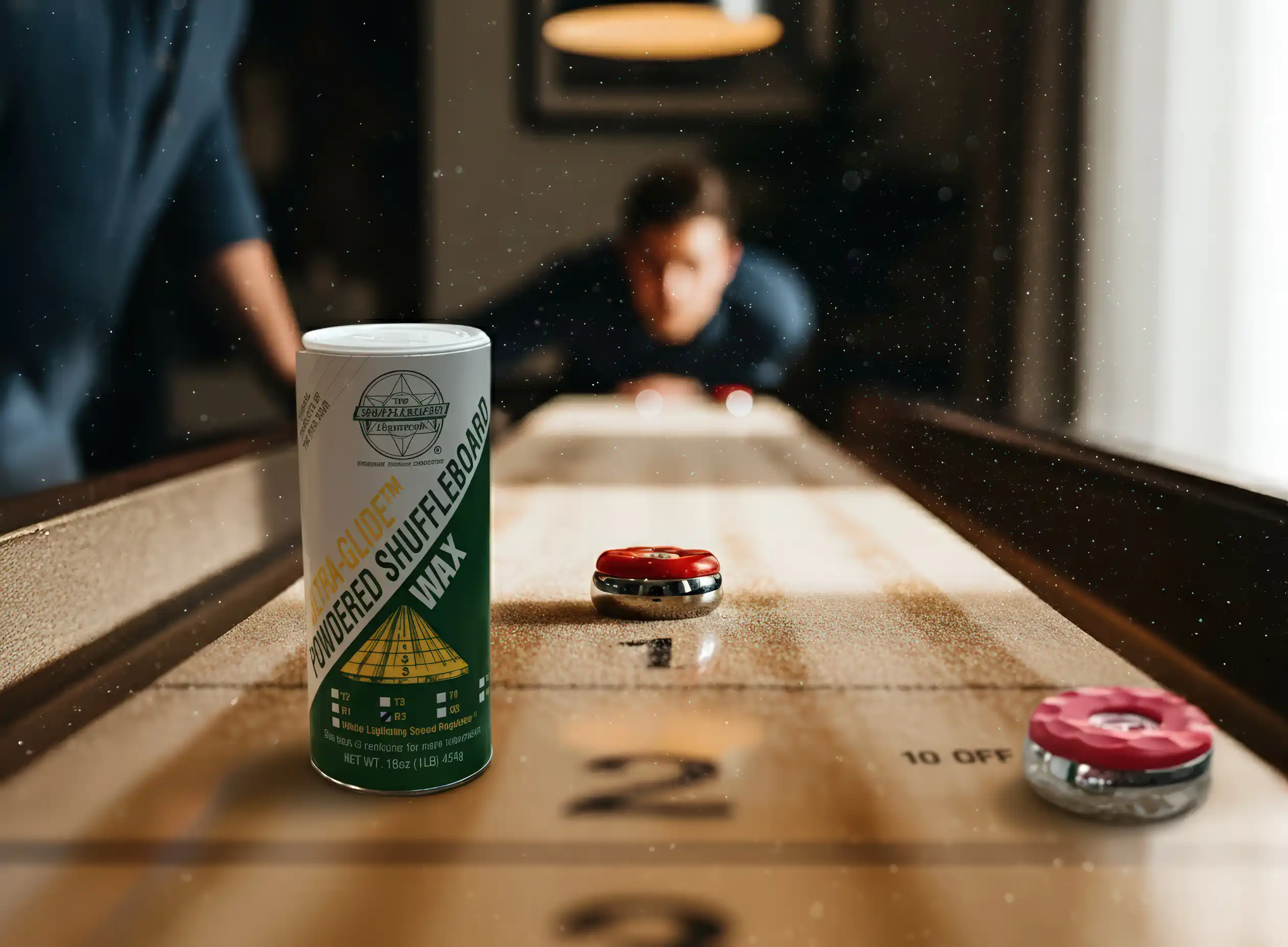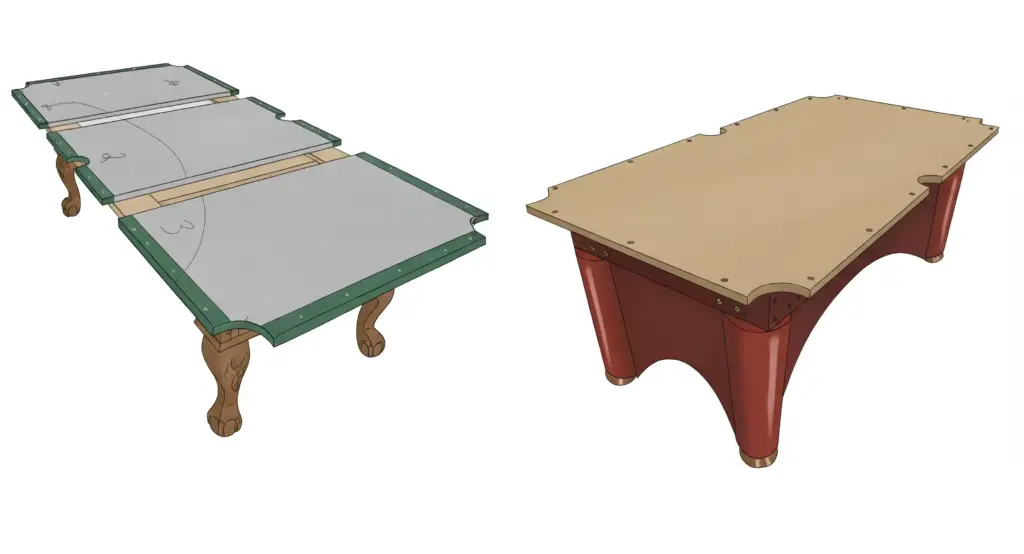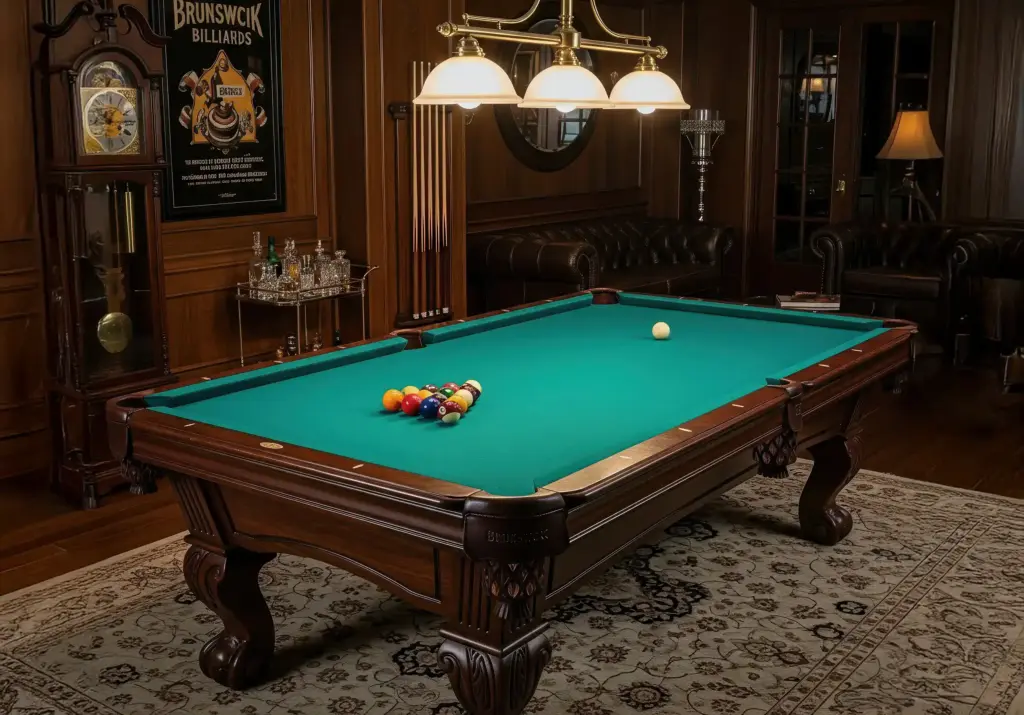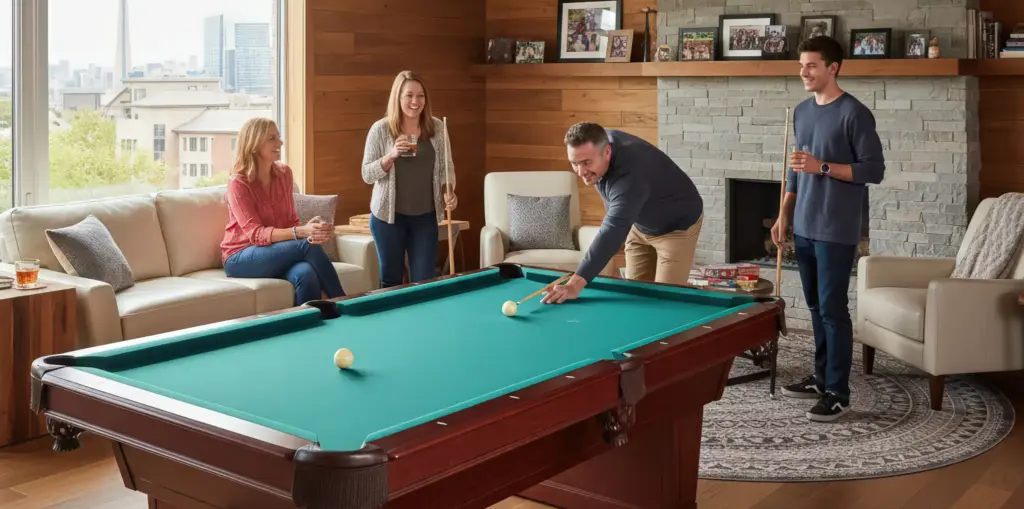Introduction
Imagine the perfect shot: your puck glides effortlessly, a silent vessel on a sea of polished wood, coming to rest just kissing the edge of the three-point zone. Now, picture the opposite: a puck that stutters, plows through gritty buildup, or careens off the end with uncontrollable speed. The difference between a game of skill and one of frustration often comes down to one accessory: shuffleboard powder.
Choosing the right powder is both a science and an art. With over 30 years of experience helping customers in the Toronto area, we know it’s the single most important variable you can control to protect your shuffleboard table, customize your game, and unlock a truly satisfying playing experience.
Key Takeaways
- It’s Powder, Not Wax:
Shuffleboard powder is a system of microscopic beads (often silicone and cornstarch) that act as tiny ball bearings, not a true wax. - Match Speed to Your Table:
The most critical rule is that longer tables require faster powders, and shorter tables require slower powders. - Application is a System:
For the best results, always start with a clean surface, use a silicone spray for consistency, and then apply a light, even coat of powder. - Mind the Environment:
Humidity and room temperature can dramatically affect how your powder performs, causing it to clump or become too fast. - Always Use Fresh Powder:
Never reuse old powder from the gutters. The crushed beads become abrasive and can permanently scratch your table’s finish.
What Is Shuffleboard Powder (And Why You Absolutely Need It)
To master the game, you must first understand the medium. Though commonly called “shuffleboard wax,” the product you sprinkle on your table is actually a granular powder. True waxes are pastes or liquids used only for polishing the table’s finish, not for gameplay. This powder is the secret to the smooth, consistent glide that defines a quality shuffleboard experience.
It’s Not Just Sand: The Science of a Perfect Glide
Modern shuffleboard powder is a carefully engineered blend of materials. The primary component is typically minuscule, perfectly round beads of dried silicone. These beads act like microscopic ball bearings, creating a nearly frictionless surface that allows the heavy puck to slide with minimal effort. To temper the extreme speed of pure silicone and give players more control, manufacturers blend in a “speed regulator,” most often a corn meal or cornstarch component. The precise ratio of silicone to corn meal is what determines a powder’s speed rating.
The 3 Core Functions of Shuffleboard Wax
Shuffleboard powder serves three essential purposes:
- Reduces Friction:
Its primary job is to create a low-friction playing surface, allowing the pucks to glide smoothly and consistently down the entire length of the board. - Protects the Surface:
The layer of powder provides a protective barrier between the heavy pucks and the delicate finish of your table, preventing scratches and wear over time. - Customizes Gameplay:
By choosing different speeds of powder, players can fine-tune the table to their exact skill level and preferred style of play, making the game faster and more challenging or slower and more strategic.
Silicone Spray vs. Powder Wax: Understanding the Difference
It is critical to understand that silicone spray is not a replacement for powder; it is a preparatory step that enhances its performance. A light mist of silicone spray creates a slightly tacky foundation that helps the powder beads adhere evenly to the table. This prevents the powder from being pushed aside by the pucks—a problem called “tracking” that creates slow spots on the board. Using silicone spray first results in a more consistent playing field and can even reduce the total amount of powder needed. You can find sprays and other board game accessories to complete your setup.
Choosing the Perfect Powder Speed: A Pro’s Framework
Selecting the right powder is a dynamic calculation. There is no single “best” powder, only the best powder for your specific table, skill level, and environment. Mastering this calculus is the key to a perfect game.
The Official Speed Rating System Explained (With Chart)
- One of the most confusing aspects for new players is that manufacturers use different, often contradictory, speed rating systems. For example, popular brand Sun-Glo rates its powders from 1 (fastest) to 7 (slowest), while the tournament-standard Shuffleboard Federation rates theirs from T0 (slower) to T5 (fastest). To make an informed choice, you must be able to translate between them.
Shuffleboard Powder Speed Rating Comparison Chart
| Brand | Relative Speed | Recommended Table Length | Key Notes |
| Sun-Glo #7 | Slowest | 9-12 ft, Shuffle Alleys | High friction, cornstarch-like |
| Sun-Glo #6 | Slow | 9-12 ft | Great for beginners and short tables |
| Triple Crown Yellow Ice I | Medium-Slow | 9-14 ft | Corn-meal based, good control |
| Brunswick/Legacy | Medium | All home tables (9-16 ft) | Nut-free, all-purpose formulas |
| Sun-Glo #3 / Fed. T3 | Medium-Fast | 14-22 ft | Tournament best-sellers, good balance |
| Shuffleboard Fed. T4 | Fast | 16-22 ft | The most common tournament wax |
| Sun-Glo #1 / Triple Crown White Ice | Fastest | 18-22 ft | Pure silicone, for expert control |
Matching Speed to Your Table Length (9ft vs. 12ft vs. 22ft)
The most important factor is your table’s length, which is a key consideration in determining your overall game room size requirements.
The rule is simple: longer tables require faster powders, and shorter tables require slower ones.
- Short Tables (9 ft – 12 ft):
On a short table, a fast powder will send the puck flying off the end with the slightest touch. A slower powder (like Sun-Glo #6) is essential to provide more friction and control. - Long Tables (18 ft – 22 ft):
On a long, regulation-style table, a slow powder creates too much drag, making it impossible to reach the far scoring zone. A fast powder (like Sun-Glo #1 or Federation T4) is needed to ensure the puck can travel the full distance smoothly.
How Your Skill Level Dictates Your Need for Speed (Beginner vs. Expert)
The players’ experience is just as crucial as the table.
- Beginners:
Novices should always start with a slower powder, regardless of table length. It is more forgiving of inconsistent force and helps new players develop a feel for the game without the frustration of constantly overshooting. - Experts:
Advanced players prefer fast powders. The minimal friction allows for subtle, high-skill shots like “hangers” and magnifies any error, making the game one of extreme finesse and precision.
The Overlooked Factor: How Humidity & Room Temperature Affect Glide
- The environment in your game room plays a surprising role. High humidity can cause powders with a corn meal component to absorb moisture, making them clumpy, tacky, and noticeably slower. A very dry room, especially in winter with forced-air heating, will have the opposite effect, making the same powder play much faster. This is a critical expert-level detail that can help you diagnose inconsistent play.
Our Top Recommended Powders for Brunswick & Olhausen Tables
- As a leading dealer for Brunswick and Olhausen, we understand the importance of a premium experience. For most home tables (9-16 ft), especially for families or those with allergy concerns, we recommend Brunswick’s own shuffleboard powder. It’s a high-quality, medium-speed, nut-free formula designed to provide an excellent, all-around playing experience.
How to Apply Shuffleboard Powder: A Step-by-Step Visual Guide
Achieving a consistent glide is a ritual. The best results come from a system of layers that work together: a clean surface, a silicone base, and a perfect dusting of powder. Following these steps is part of the ultimate guide to transforming your billiard and gaming room.
Prepping the Surface (The Importance of a Clean, Polished Board): Step 1
- You must only ever apply powder to a perfectly clean and dry surface. Applying it over old, crushed powder and dust will create an erratic playing surface and can even scratch your table’s finish. For modern polymer finishes, a simple wipe-down with a soft cloth and a multi-purpose cleaner is sufficient.
The Base Coat – Applying Silicone Spray (Optional): Step 2
- While optional, professionals swear by this step. A light mist of silicone spray creates a base that holds the powder beads in place, preventing tracking and ensuring a uniform playing field from the first shot to the last. Hold the can at a low angle and let the mist settle gently onto the surface. Let it dry for a minute before applying powder.
The Application – Achieving a Consistent, Even Coat: Step 3
- The biggest mistake beginners make is using too much powder. This causes “snowplowing,” where the puck pushes a pile of excess powder, slowing the shot. A light, even “snowfall” is the goal. It is always easier to add more powder than to take it off.
Application Technique: The “Sprinkle” vs. The “Line” Method
- There are two primary methods for application:
-
- The Sprinkle:
Using the sifter top, walk the length of the table while sweeping your arm from side to side, creating a fine, even coat across the entire board. This is the most common and reliable method for general play. - The Line:
For more advanced, strategic play, some players apply thin lines of powder down the board, leaving areas with less powder. This creates “lanes” of different speeds for expert shot-making.
- The Sprinkle:
What the Perfect Application Looks Like
- Visually, a perfect application should look like a light, consistent frost on a windowpane. You should be able to see the wood grain faintly through the powder. There should be no clumps, piles, or bare spots.
Spreading and Settling the Powder: Step 4
- After the initial sprinkle, some players use a board wipe to gently spread the powder for an even more uniform coat. Once applied, let the powder settle for a few minutes before playing your first game.
Advanced Techniques & Maintenance
Proper maintenance protects your investment and ensures a high-quality game for years to come.
How to “Break In” a Newly Waxed Table
- After applying a fresh coat of powder, the first few games are part of the “break-in” process. Use your first few shots to gently spread the powder around the table. Don’t worry about scoring; focus on moving the pucks across all areas of the board to ensure the powder is evenly distributed and settled.
How Often Should You Clean and Re-apply Powder?
- For optimal performance, you should clean off all old powder and re-apply a fresh coat before every playing session. At a minimum, for casual home use, you should clean and re-apply after every 3-4 games or whenever you notice the pucks slowing down or behaving inconsistently.
Pro-Tip: How to “Bank” Powder for Advanced Shots
- Advanced players can manipulate the powder for strategic advantage. By sweeping a small amount of powder against the side rails, you can create a “bank” of thicker powder. This allows you to perform trick shots where the puck rides up the rail and then comes back down onto the playing surface.
The Complete Guide to Cleaning: Board, Pucks, and Floors
- Always use a dedicated board wipe or a soft, dry cloth to sweep all used powder and any dust into the gutters. Clean your pucks periodically with a soft cloth to remove any accumulated residue. Be aware that silicone spray and powder can make the floors around your table extremely slippery, so be sure to sweep or mop up any overspray or spills immediately.
Troubleshooting Common Shuffleboard Powder Problems
Even with perfect preparation, issues can arise. Here’s how to solve the most common problems.
Help! My Pucks Are Too Fast/Too Slow
- Too Fast:
This is the most common issue for beginners on shorter tables. You are using a powder that is too fast for your table length. Switch to a slower speed (a higher number for Sun-Glo, a lower number for Federation). - Too Slow:
This usually means you need a faster powder for your long table. It can also mean your powder is old or has absorbed humidity, or you haven’t cleaned the old, crushed powder off the board.
What to Do If Your Powder is Clumping
- Clumping is almost always caused by humidity. Your game room is too damp, causing the cornstarch component in the powder to absorb moisture. Store your powder in a sealed, airtight container in a dry place. In the long term, consider using a dehumidifier in your game room.
How to Fix Inconsistent “Dead Spots” on Your Table
- “Dead spots” or “slow spots” are usually caused by tracking, where pucks have carved paths through the powder. This means the powder is not being held in place. The best solution is to clean the board and start over, this time using a silicone spray first to create a more consistent, durable playing surface.
Our Curated Selection of Professional-Grade Shuffleboard Powders
With so many options, choosing can be tough. Here are our top recommendations based on your needs.
Sun-Glo Speed #6 – Best for Beginners
- For anyone new to the game or with a shorter home table (9-12 ft), Sun-Glo #6 is the perfect starting point. It’s a slower powder that offers maximum control, making it forgiving for new players and reducing the frustration of overshooting the board.
The Shuffleboard Federation Ultra-Glide T4 – Best for Tournament Play
- If you want to play like the pros, use what the pros use. Federation’s T4 is the standard for most major tournaments. It’s a fast powder that rewards precision and skill, designed for competitive play on regulation-length tables.
Brunswick Shuffleboard Wax – Best All-Around for Home Game Rooms
- For the majority of home game rooms with tables between 9 and 16 feet, we recommend Brunswick’s signature powder. It’s a premium, medium-speed formula that offers a fantastic balance of speed and control. As a bonus, it is 100% nut-free, making it a safe choice for families with allergy concerns.
Frequently Asked Questions (FAQ)
What is the difference between shuffleboard powder and shuffleboard wax?
- The terms are often used interchangeably, but they are different products. Shuffleboard “powder” or “sand” is the granular beads you sprinkle on the surface for gameplay. True shuffleboard “wax” is a paste or liquid polish used to clean and protect the wood finish itself, not for playing on.
Can I use too much shuffleboard powder?
- Yes. A common mistake is to apply too much powder, which is counterproductive. It causes “snowplowing,” where the puck pushes a pile of powder, creating drag and making shots slow and erratic. A light, even coat is all you need.
How often should I change my shuffleboard powder?
- For the best performance, you should sweep off all the old powder and apply a fresh coat before each playing session. For casual home use, cleaning and reapplying every few games is a good rule of thumb.
Is shuffleboard powder safe for kids and pets?
- Most modern powders from reputable brands are non-toxic. However, some high-performance powders contain finely ground walnut shells. If you have nut allergies in your family, we strongly recommend choosing a certified “nut-free” powder, like the one offered by Brunswick, for complete peace of mind.
For professional advice on selecting the right accessories for your game room in the Greater Toronto Area, contact Hallmark Billiards today.
